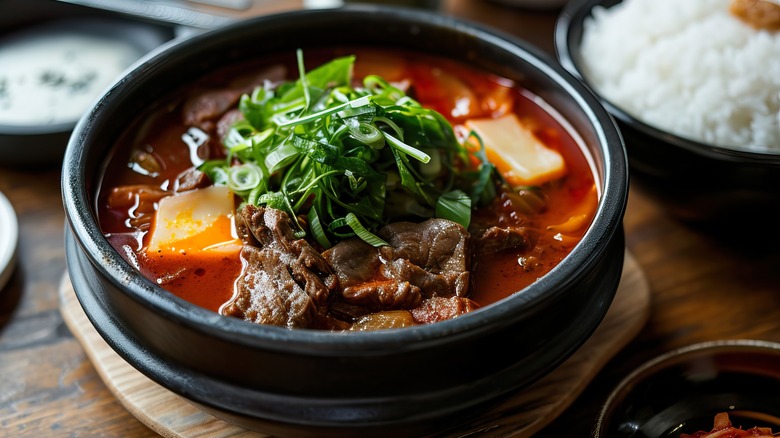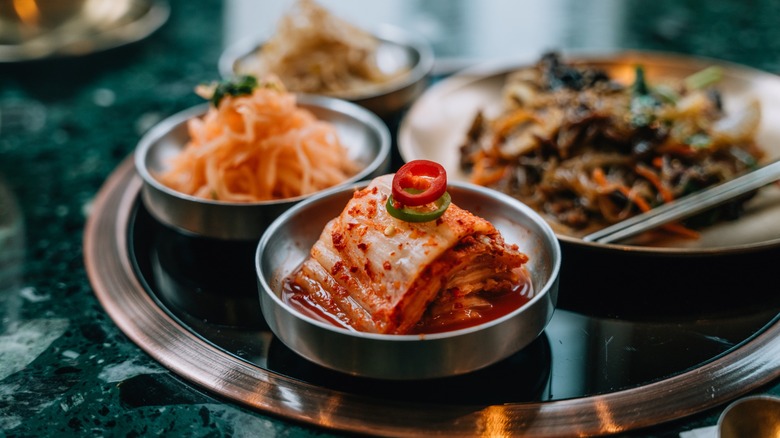The Best Way To Serve Korean Beef Stew
Serving Korean beef stew, or yukgaejang, isn't just about ladling broth into a bowl — it's about crafting an experience. This hearty dish, made with slow-cooked beef, vegetables, and a bold blend of garlic, soy sauce, and red pepper flakes, packs the kind of heat that clears sinuses and warms souls. But even the best stew needs the right sidekicks to shine.
To get the deets on how best to serve this stew, we spoke exclusively with Chef Ji Hye Kim, of Miss Kim in Ann Arbor, Michigan. "Serve with a bowl of freshly made white rice and kkakdugi," she told Tasting Table. "You can even eat it drunk ajussi-style, like a middle-aged man, by adding some of the brine of kkakdugi right into yukgaejang to add some brightness to the soup."
Kkakdugi, cubed radish kimchi, adds a refreshing crunch to the stew, but doesn't dilute the heat. As Chef Ji Hye Kim notes, adding the brine of the kimchi directly into the stew can also lift the entire dish, adding a little lightness and sourness. You can also enjoy yukgaejang with a cold beer or a smooth soju. This Korean alcohol is kind of like vodka but sweeter and milder, with a crisp taste from its base ingredients like wheat and fruit that pair perfectly with spicy dishes like this one. So, embrace this fun approach to serving, and you'll create a dining occasion everyone will remember!
How to host the ultimate yukgaejang feast
To turn a simple bowl of yukgaejang into a full-on feast, mindful presentation is key. Start by serving the stew piping hot, so it's still steaming and aromatic. Guests can dive in by mixing rice directly into the broth for a delicious combination, or by eating spoonfuls of rice alongside each bite of stew.
No Korean meal is complete without banchan, a selection of small side dishes that add variety to the spread. For a light, flavorful bite, consider serving namul, a seasoned vegetable dish that can feature blanched spinach or watercress tossed in perilla oil and garlic. You could also offer cucumber salad, with cucumbers in a soy sauce and rice vinegar dressing. And of course, don't miss out on tteokbokki, which features chewy rice cakes paired with boiled eggs and chopped green cabbage.
For the grand finale, consider setting up a toppings station. Lay out some chopped scallions, toasted sesame seeds, and a bottle of gochujang, or red chili sauce. Let your friends or family go wild personalizing their bowls. This not only adds layers of flavor but also sparks some friendly competition to see who can create the ultimate yukgaejang masterpiece. With these thoughtful details, you'll transform an already great stew into a meal your guests will rave about long after the bowls are empty.

